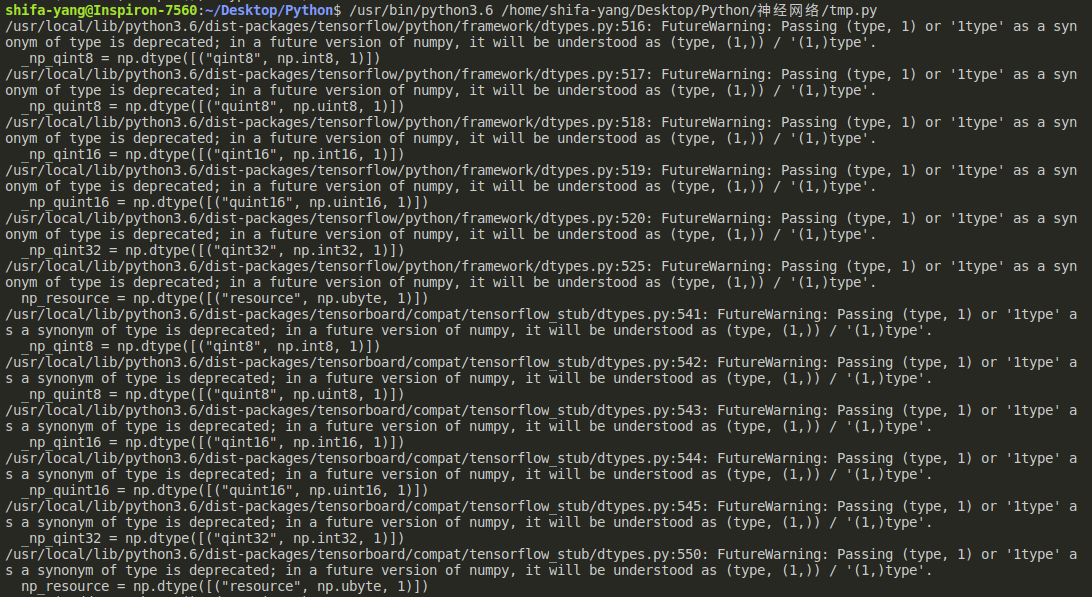1、安装TensorFlow
1、安装
建议安装1.12.0版本
1 | pip install tensorflow==1.12.0 |
2、TensorFlow与NumPy版本不兼容
1.18.0版本的NumPy与TensorFlow不兼容,改用1.14.0版本的NumPy

安装1.14.0版本的Numpy
1 | pip install numpy==1.14.0 |
3、取消警告提示

TensorFlow在运行时会提示警告,将下列语句添加到程序文件中来取消提示。
1 | import os |
2、基础
1、简单程序 a+b
1 | import tensorflow as tf |
2、查看默认图
1 | import tensorflow as tf |
3、自定义图
1 | import tensorflow as tf |
4、图的可视化
1 | import tensorflow as tf |
运行程序会在./神经网络/TensorFlow教程/06图的可视化/目录下生成event文件,在终端执行如下命令:
1 | tensorboard --logdir='./神经网络/TensorFlow教程/06图的可视化/' |
5、会话Session
1 | import tensorflow as tf |
6、feed_dict的使用
1 | import tensorflow as tf |
7、创建张量
1 | import tensorflow as tf |
8、改变张量形状
1 | import tensorflow as tf |
9、矩阵运算
1 | import tensorflow as tf |
3、案例
1、线性回归模型
1、线性回归原理
1、构造模型
$ y = w_1x_1 + w_2x_2 + … + w_n*x_n + b $
2、损失函数
均方误差
3、优化损失
梯度下降
2、设计方案
1、准备数据
随机100个点,只有一个特征,x和y之间满足关系$ y = kx + b$
X.shape = (100, 1)
y.shape = (100, 1)
数据分布满足 $y = 0.8x + 0.7$
y_predict = tf.matual(X, weight) + bias
2、构造损失函数
error = tf.reduce_mean(tf.square(y_predicty-y))
3、优化损失
tf.train.GradientDescentOptimizer(learning_rate=0.01).minimize(error)
3、实现
1 | import tensorflow as tf |
4、添加变量显示
1 | import tensorflow as tf |
5、增加命名空间
1 | import tensorflow as tf |
6、保存模型
1 | import tensorflow as tf |
7、读取模型
1 | import tensorflow as tf |
2、手写数字识别
1、数据准备
1 | from tensorflow.examples.tutorials.mnist import input_data |
2、实现
1 | from tensorflow.examples.tutorials.mnist import input_data |